The number of games released by Nintendo and Game Freak over the years since 1996 for the famous and renowned Pokémon franchise is huge, and many players may have the desire to go through all possible experiences within the fantastic world of the pocket monsters.
However, this can end up being confusing for many people, since, in addition to different versions and games, the stories are varied, the Pokémon change from game to game and this leaves many fans lost as to how to complete their Pokédex or how to explore each region or location with maximum benefit.
Ad
UmGamer today brings a list of all the games in the franchise's main line, in order of release, so that everyone can experience each secret, each unique piece and even each of the famous bugs that Pokémon can have. Let's go generation by generation, game by game, version by version and understand in the best possible way how to step in the shoes of a true Master.
Generation 1: Kanto

Pocket Monsters: Green
- Release year: 1996
- Console: Game Boy
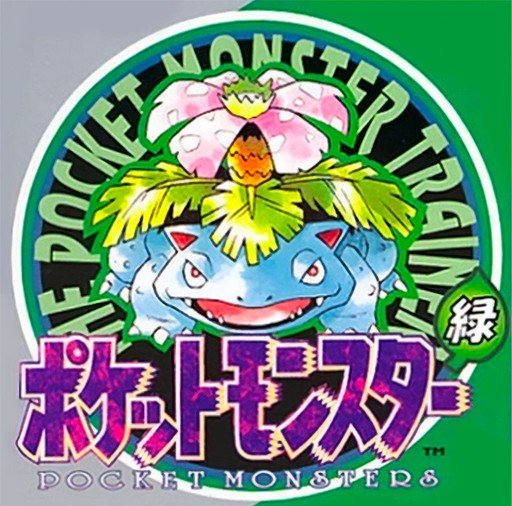
The vast majority of us western Pokémon fans hadn't even heard of this version, or at least not until the release of its third generation Remake, Leaf Green. The game is basically the “beta version” of what we know as Red & Blue, there is no official translation into English or any other language and, to adventure throughout this game, you need to understand a little Japanese.
In the same way that the first games were so engraved in our memories, it is possible to complete the game using only the information we already know. The sprites are not the prettiest, although they bring a lot of nostalgia for the more “raw” art style of the initial generations, and are very reminiscent of what we watched in the anime with Ash Ketchum's first adventures. But, since Pocket Monsters: Green is so unknown and mysterious to us here in the West, let's move straight to the versions that revolutionized the gaming industry, and which can be a much more interesting starting point for everyone.
Pokémon Red & Blue
- Release year: 1996
- Console: Game Boy
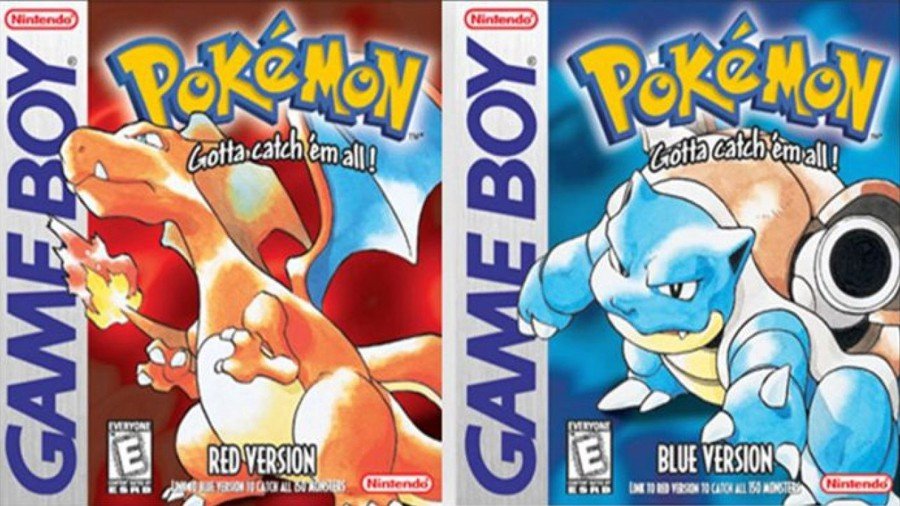
When Pokémon Red and Pokémon Blue arrived in Western markets in the late 90s, children and teenagers of all ages were able to experience a career as Trainers for the first time and become Masters of the Kanto region.
Just like in the Green version, we step into the shoes of the legendary Red, a young aspiring Pokémon trainer from the small town of Pallet, who must choose between Bulbasaur, Charmander and Squirtle as his faithful companion to achieve his big dream. During the plot, we are introduced to Team Rocket, a criminal organization that steals Pokémon and valuable items for their own profit. Throughout the story, we must defeat them while discovering dark secrets about their leader, Giovanni, who was involved in the creation of the first artificially manipulated Pokémon, Mewtwo.
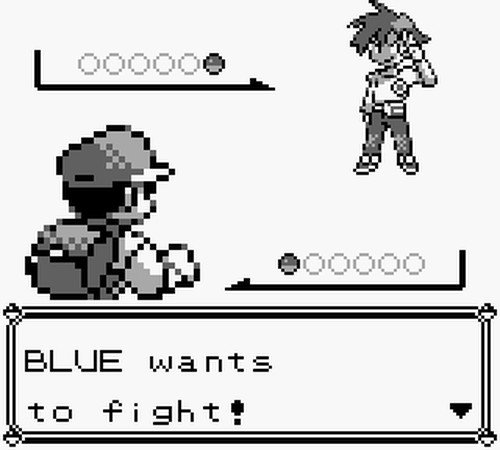
Ad
While the story of the first generation of Pokémon is very linear and without many secrets, the amount of content inserted into the small capacity of the Game Boy cartridges was, actually, revolutionary for the time. The game was long, with many high difficulty points and challenges for those who had never heard of the franchise, which was - however strange we may find it today - very common at the time of launch.
The black-and-white graphics with slightly improved sprites compared to its predecessor brought a unique feeling of being able to explore an entire world (since we didn't even know that there would be more regions later) with its different locations, biomes, people and cultures, all of that while we trained our little monsters and paved the way for us to beat the powerful Elite 4 until we were challenged by our rival, Blue, who was always one step ahead of us, even when it came to becoming champion.
Currently, it is possible to play these games not only on Game Boys and Game Boys Color, but there are updated versions for other Nintendo platforms - although all of them, currently, are much more expensive than what we were used to back in the 90s. Fans tend to experience more classic games in emulators on their computers or cell phones, or simply play the Remakes which came out in later generations.
Pokémon Yellow
- Release year: 1998
- Consoles: Game Boy/Game Boy Color
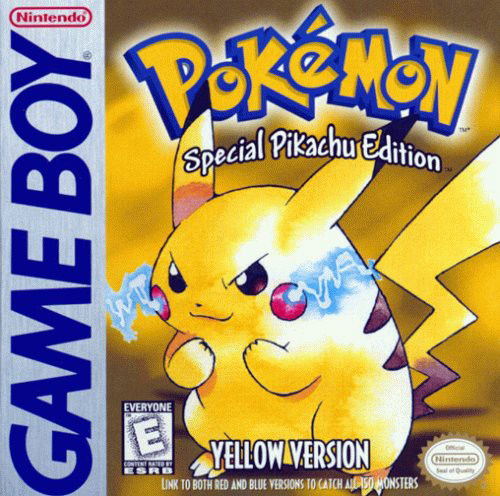
With the unmatched success that Pokémon achieved, it wasn't long before its anime also became a staple in the lives of young people at the time and made everyone want to have a Pikachu of their own as their starting partner, just like the famous Ash Ketchum from Pallet Town. Pokémon Yellow brought with it exactly this proposal, putting us in Red's shoes again, but this time starting the campaign with the beloved and shocking yellow rodent. Gameplay differences are few, but the opponent’s levels are slightly higher and sometimes teams are also modified to become more similar to what we watched on TV.
Although the plot was the same as the previous games, we now had our Pikachu walking behind the protagonist, and it was still possible to interact with him to find out if he was happy, sad, worried, tired, among other emotions. Another difference was the release, which was already designed for the successor to the Game Boy, the Game Boy Color. For the first time, cities had different colors from each other and players were able to experience more beautiful sprites, based on the anime, colored with the actual colors that the monsters should have.
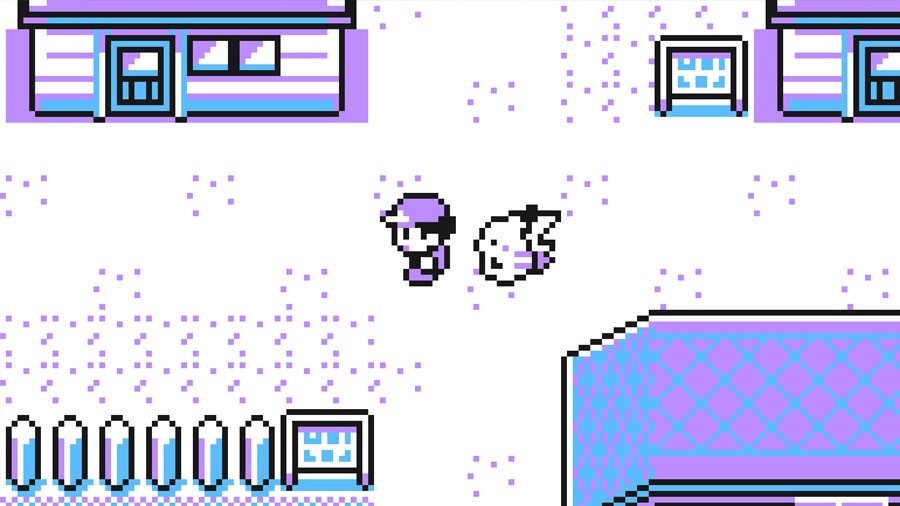
The first generation was not just a milestone for gamers, but for developers as well. The complete team of designers and programmers was less than ten people strong, and so it is completely understandable that the game was released with some small errors and bugs which have become famous over the years.
Ad
Among the most well-known bugs we have Missingno, a “Pokémon” that, in fact, is data not entered in the game and, therefore, displayed as “Missing Number”. Finding Missingno could cause many bugs and even completely crash the game, but many players found methods of using their programming algorithms to manipulate the quantity of items, rarity of some Pokémon, etc.
Another well-known bug from the first generation is the “Badge Boost Glitch”, or Badge Improvement Glitch. With each gym badge acquired, the player also gained a bonus - which could vary from 12.5% in one of the four attributes (Attack, Defense, Special and Speed) to a higher level limit so that traded Pokémon would not become disobedient. The problem is that, due to somewhat of a “spaghetti” code, each time a Pokémon used an attribute improvement technique (such as Swords Dance to increase attack) the game also added another 12.5% to all other attributes in which the player had already had that badge. Towards the end of the game, spamming techniques like this could make your Pokémon so buffed that it was almost impossible to lose a battle against the game's AI. And to top it off, the same bug worked when your Pokémon was hit by an enemy attribute-modifying technique. Currently, this glitch is even used by speedrunners to obtain increasingly stronger Pokémon in battles.
Generation 2: Johto
Pokémon Gold & Silver
- Release Year: 1999
- Console: Game Boy Color
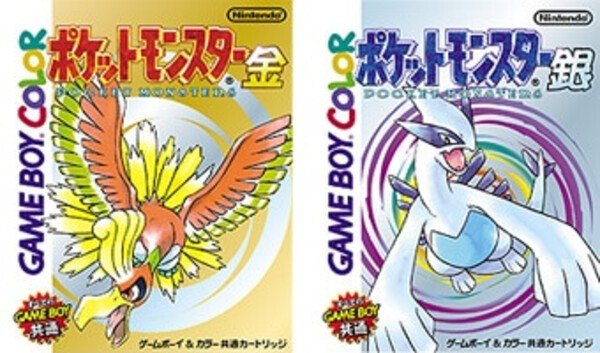
Given the huge and exponential success that Pokémon was having, nothing more fitting than releasing a sequel with improved quality, a greater quantity of monsters available and a new map, with a new region full of different cultures and locations and which, on top of that, also allowed the player to explore Kanto post-game. Despite being considered by many fans as “generation 1.5”, the second generation of Pokémon was actually a huge success and has remained among the favorite games of many players since that time. For the first time the game was 100% optimized for the Game Boy Color and the colors were no longer so static, showing more variation from screen to screen, city to city, battle to battle.
On top of the 151 monsters already presented in the first games, we had the addition of 100 more little creatures, including evolutions like Steelix and pre-evolutions like Pichu. Unlike their predecessors, the legendary Pokémon of the Johto region were more directly part of the story, in a more influential way (previously it was completely optional to hunt Articuno, Zapdos, Moltres and Mewtwo, while in Gold and Silver you needed to cross paths with the three beasts Suicune, Raikou and Entei at some point in your campaign) and the main plot takes place three years after the fall of Team Rocket defeated by Red - therefore three years after the events of Red, Blue and Yellow.
Ad
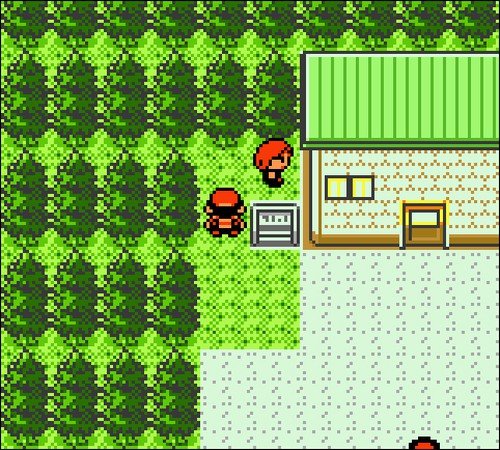
This time, we must step into the shoes of Gold, a novice trainer from the city of New Bark, in the Johto region, who must choose between Chikorita, Cyndaquil or Totodile as his partner to explore the continent. Based in the central-western region of Japan (where Osaka and Kyoto are located, for example), we have several visual factors that remind us of traditional Japanese architecture, such as castles, towers and pagodas, gardens, bridges and parks, among others. In this region, Team Rocket is trying to get back into action using radio waves from the tower of the great metropolis of Goldenrod to capture, evolve and manipulate Pokémon from all over the place, and it's up to Gold and his team of little monsters to defeat them alongside well-known names such as Lance, the champion of the League until that point.
After finishing the main story, Gold also gets a passport to visit the neighboring region of Kanto, which made fans at the time turn ecstatic: two regions in just one game, being able to explore first the new maps and, in then, those cities that they already knew so well from previous games. As a final challenge, Gold has the chance to face Red himself, with his iconic Pokémon and a team full of starters and other rare Pokémon.
Among the new features presented in the second generation, we have the mechanic of items stored with Pokémon (or Held Items) which normally grant some extra effect to the little monster during battles or even to manipulate its evolutions. We were also introduced for the first time to Breeding, where we could leave two Pokémon of opposite genders in a Day-Care and wait a few days to receive an Egg that would eventually hatch into a new monster.
We also had the introduction of the day-and-night cycle, which triggered specific events and modified the range of Pokémon available in each location we passed through, and finally, we had the separation of the “Special” attribute between “Special Attack” and “Special Defense” which made psychic Pokémon much less overpowered than they were in previous games.
Pokémon Crystal
- Release year: 2000
- Console: Game Boy Color
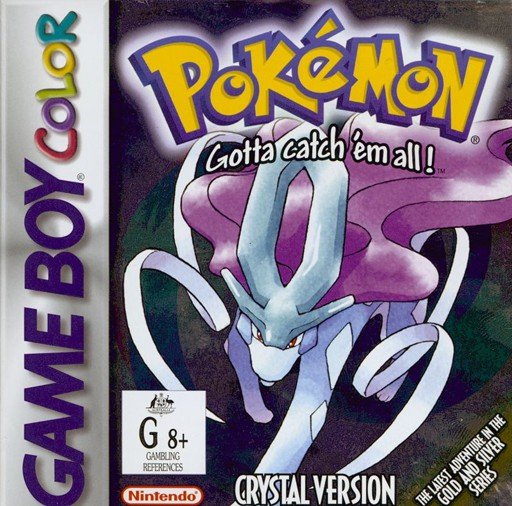
Like Yellow, the Crystal version was released as an extension to the main story of Gold and Silver. For the first time, it was possible to choose between a male or female protagonist, and the sprites for all Pokémon gained battle start animations, granting even more life and dynamism to the gorgeous graphics of the second generation.
Although the main plot is the same with Team Rocket trying to get back into action through the waves of the Goldenrod Radio Tower, this time we have a story centered around the appearance of Suicune, a legendary and powerful beast that introduces us to Eusine, a specialist who spent his entire life chasing this mysterious icy dog and became interested in the protagonist since the Pokémon itself seemed to follow them throughout their adventure. Just like in Gold and Silver, the other two legendary beasts move around in different locations on the map, giving a much higher RNG factor to find them and even more difficulty in capturing them, since they always run away in the first round of combat - in addition to taking the main focus away from the birds Ho-Oh and Lugia.
Ad
Just like the first generation, currently the best way to experience Johto is through Remakes or Emulation.
Generation 3: Hoenn
Pokémon Ruby & Sapphire
- Release Year: 2002
- Console: Game Boy Advance
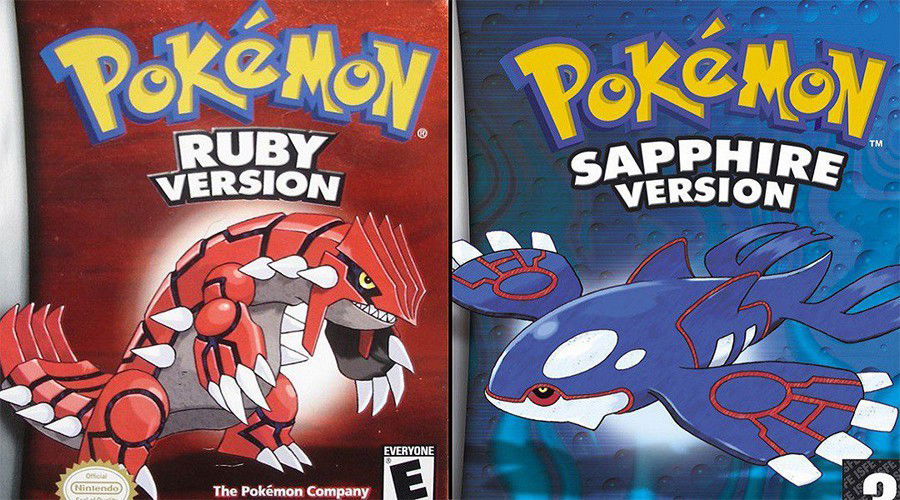
After the Game Boy Color era, the Game Boy Advance arrived alongside improvements to the platform in graphical and technical matters, bringing the first major change in Pokémon graphics to something completely colorful - not just the GBC's limited color palettes. The new graphics, the new instruments used in the songs and an innovative variation of monsters available in the new region marked a renewal of the franchise and, for many until this day, it’s the true “first generation” to start playing the games through, even more so because it was in this era that the first games had their first remakes
In addition to 135 new Pokémon, in these games we could explore the Hoenn region, a continent known by fans as “having a lot of water”. Practically, half of the map is accessible through long sea routes, either using Surf or sailing with the illustrious Mr. Briney's boat, an older man who lives on a route between two cities and can take us to different corners of the great ocean in this huge map.
In these games, we step into the shoes of either Brendan or May (this is also the first generation in which the protagonists' names are not directly related to the name of the games) and we need to not only explore the continent, but gather the eight badges (the fifth of which being a direct battle against the protagonist's father) and end up coming face to face with the Aqua or Magma teams (depending on the version you’re playing), teams of mercenaries who are trying to get their hands on rare gems and meteorites to wake up and capture the powerful Groudon and Kyogre. Once again, we are thrown into a plot involving legendary Pokémon, and we must balance our adventure between saving the world whilst not losing focus on our greater goal of becoming a Master.

For the first time, we were introduced to the mechanics that still exist today which are among the most influential for the most hardcore players and even in the competitive scene: passive skills, personalities and EV/IVs. Passive Abilities are connected directly to Pokémon as a way of giving them a new power activated by something done in battle - such as the possibility of paralyzing opponents who come into physical contact with an electric Pokémon with the Static ability, for example. As for personalities, the little monster could be Shy, Brave, Lazy, among others - and most of the different personalities could increase and reduce some basic attributes to allow you to optimize each member of the team as you think it’s best.
Ad
In previous games, Pokémon's attributes rose with each level and could increase differently depending on which opponents you defeated, called Static Experience. Starting in the GBA era, we were introduced to the EV/IV mechanics, which persist to this day, assigning a limit of innate points gained per level and also establishing a base for each monster captured.
And the news didn't stop there! We also had the introduction of Double Battles (2v2), Pokémon Contests in which we could compete in different ways such as beauty or performance and also something that saved the lives of many long campaigns: Running Shoes, or shoes that allow you to run around the map by holding the B button without needing a bicycle to move faster between locations.
Pokémon FireRed & LeafGreen
- Release year: 2004
- Console: Game Boy Advance

The first of all the countless Remakes made for the franchise, FireRed and LeafGreen are games for those who wanted to experience the first and nostalgic region of Kanto with the improved graphics and mechanics of the third generation. The Pokémon sprites are beautiful, the scenarios gave a whole pleasant new sight for the beloved and already well-known continent and, although we experience the same story and narrative as Green, Red and Blue, we have the addition of the Sevii Islands, an archipelago introduced to also give us the opportunity to capture Pokémon from other regions and challenge new adventures and mysteries.
Pokémon Emerald
- Release year: 2004
- Console: Game Boy Advance
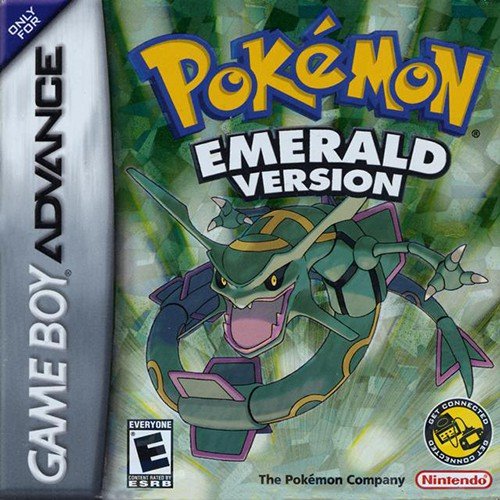
After the successes of the “third versions” Yellow and Crystal, nothing less was expected from the third and acclaimed generation of Hoenn as well. Pokémon Emerald came to bring the two stories mixed up, entangling the protagonist with both Team Aqua and Magma in the same campaign and adding the plot about Rayquaza, a powerful legendary dragon, interfering in the great cataclysm that would happen to Kyogre and Groudon if they continued their fierce battle.
The difficulty level of trainers in Emerald is slightly higher, but the objectives and adversaries are basically the same. The animations and sprites were slightly improved and the biggest addition in this version was the Battle Frontier, an extra challenge for the player to test their skills and get the chance of being granted rewards and rare Pokémon (or even those you could not get in any other way in the game).
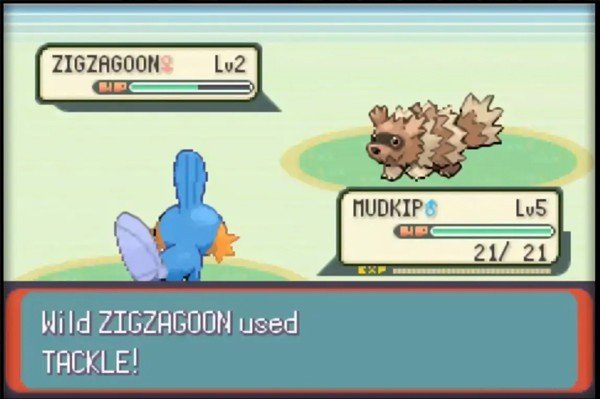
Emerald ended up becoming an excellent option for those who want to experience the third generation of Pokémon with everything it entails. It's a complete game, with a Post-Game stuffed full of content and an engaging story that well encompasses the events of its predecessors Ruby and Sapphire. Certainly, a Must-Play for fans of the franchise - both older ones and those who became familiar with it in future generations.
Ad
GameBoy Advance games are a little easier to play without needing the original console or emulation - although this is still the most commonly used form - as they are already part of classic collections and packs re-released for Nintendo's most recent consoles.
Generation 4: Sinnoh
Pokémon Diamond & Pearl
- Release year: 2006
- Console: Nintendo DS

As time passed, consoles became more modern and graphics more beautiful and daring in the new technologies that players fell in love with, Pokémon returned with its fourth generation on the Nintendo DS and many improvements to the player's quality of life. The first and most easily noticed were the graphical changes to less “top-down” maps (viewed directly from above the player's head) to something more angular, making better use of 3D rendering to make it so that the pixel art sprites of these titles become a fascinating differentiator.
Moreover, all sprites were animated throughout the entire battle, instead of just when Pokémon appeared or were defeated, giving more dynamism and life to the little monsters during battles. Nintendo and Game Freak's first experiments with these new graphic technologies were interesting, but there was still a lack of speed and fluidity at times, especially in screen and scene transitions.
In terms of gameplay, the big differential in generation 4 was the separation of skills with physical and special damage between all types. Previously, the type of attack chosen (Grass, Water, Fire or Electric, for example) defined whether it would be Special or Physical, making it easy to defend against certain trainers or situations. From Diamond and Pearl onwards, specific attacks would be categorized into a damage type individually, rather than being defined solely by the element they were part of.
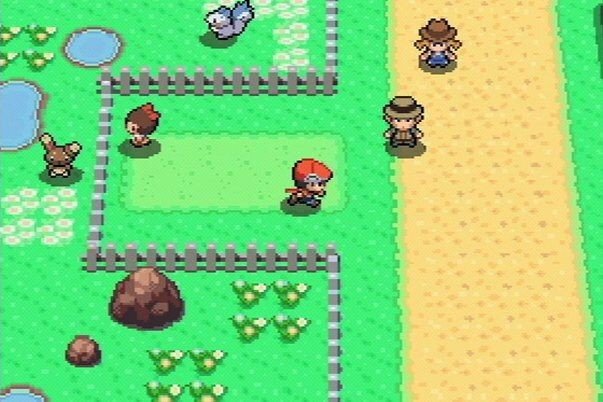
With so many technical, graphic and competitive changes, the player's campaign ended up becoming simple, similar to the previous ones, making players embody Lucas or Dawn in their adventures through the northern and cold routes and cities of the mountain region of Sinnoh, alongside their partners Turtwig, Chimchar or Piplup, while directly interfering in the evil plans of the mysterious criminal organization Team Galactic, aiming to defeat them. Again, the region's legendary Pokémon are more directly part of the story, with Uxie, Azelf, Mesprit, Palkia and Dialga being relevant characters in the unveiling of the plot. All of this while we continue our adventures to become a Master by defeating the gyms and the Elite 4.
The fourth generation also brought online connectivity as a new and definitive function, which would become mandatory for future games - even though, at the time, it was still quite complicated for many players to be able to have good experiences playing or trading Pokémon over the internet, since it wasn't something very thoroughly explored during the era of its release.
Ad
Pokémon Platinum
- Release Year: 2008
- Console: Nintendo DS
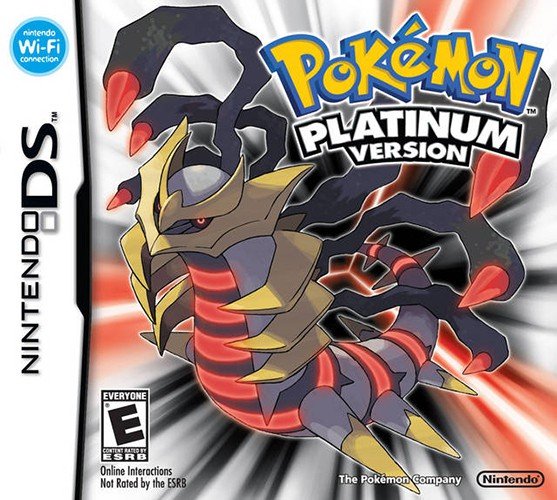
The launch of Pokémon Platinum was already long awaited by players of the franchise, who knew that after the two titles launched in parallel with each other, an improved version would follow. This title did it masterfully because despite not bringing many new features to the game in terms of history and mechanics, it made all of Diamond and Pearl's innovations become even more complete and well-crafted.
The graphics and sprites became more fluid and better animated, the 3D rendering of some scenes and effects was improved and this completely helped to correct the issues with the speed and transition between scenes. Even the game's connectivity was improved with the introduction of WiFi Plaza, making players much more interested in trying it out

Pokémon HeartGold & SoulSilver
- Release Year: 2009
- Console: Nintendo DS
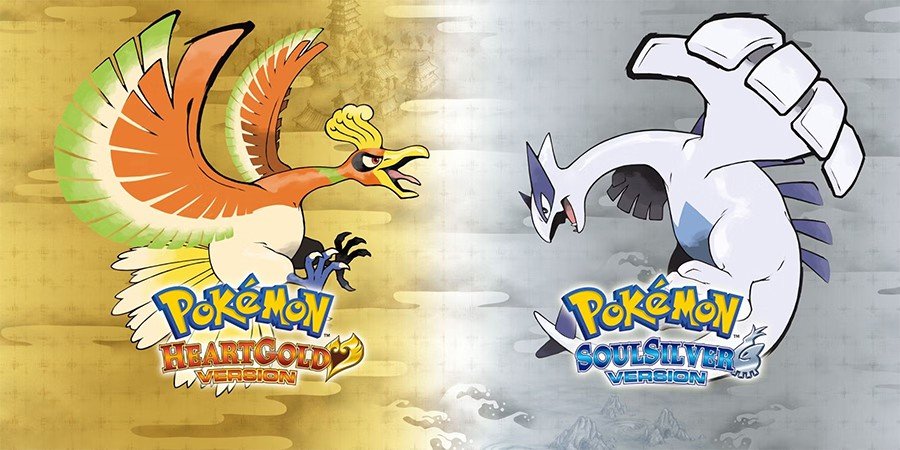
Considered one of the best remakes in the franchise, HeartGold and SoulSilver brought the new graphics, renderings and animations from the Platinum era applied to the incredible second generation, to make it possible to experience Johto in the best way possible. Despite the graphical improvements and addition of the new generations' mechanics, there was nothing that new and different from the game's story, being once again another magnificently well done reinterpretation.
Generation 5: Unova
Pokémon Black & White
- Release year: 2009
- Console: Nintendo DS
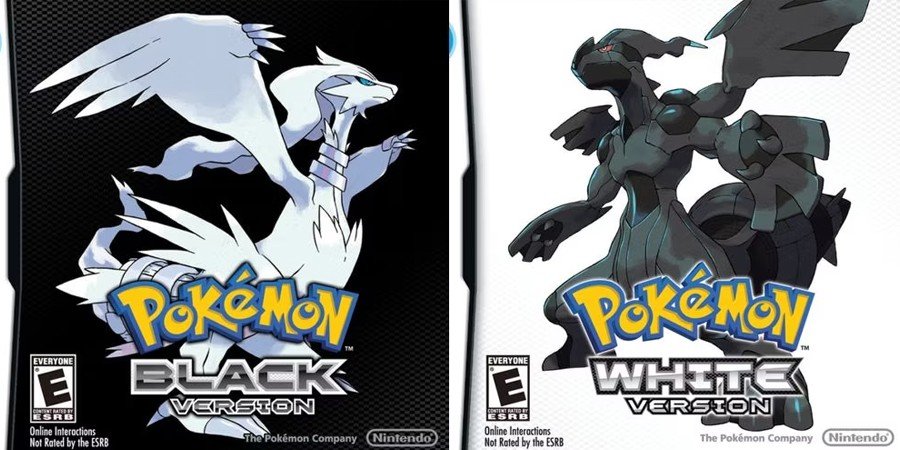
Following the trend of double releases, Black and White were games that did not bring any major news since Platinum, except, obviously, the new and huge region of Unova which, as we will see below, ended up yielding the first direct sequel of a game in the franchise.
We step into the shoes of Hilbert or Hilda from the day of selecting our first Pokémon partner between Snivy, Tepig or Oshawott as our initial companion, offered by the renowned Professor Juniper. Our journey with friends and rivals begins in the city of Nuvema and must pass through several different locations, routes and cities in one of the largest regions ever presented to date, seeking out our eight badges and, eventually, challenging the Elite 4 as always.
In this game, we come face to face with Team Plasma, led by champion N, as well as the mysterious Ghetsis with his shady objectives. For this adventure, the legendary Zekrom and Reshiram are fundamental pieces of the narrative. With a grand total of 649 Pokémon, this game offers several possibilities for exploration, capture, battles and adventures in one of the longest games we have in the franchise.
Ad
In addition to having a version that is even more superior to previous games which already included a series of graphical and technical improvements, Black and White brought dynamic camera angles in battles, more 3D aspects with beautiful sprites and animations and also the possibility of carrying out triple or rotational battles. Triple battles are exactly like double battles, but with three Pokémon on each side, while rotational ones depend on the positioning of each of the three team members to create strategies and work with their movement and rotation to achieve better results.
Pokémon Black 2 & White 2
- Release year: 2012
- Console: Nintendo DS

Still in the DS era, Black and White 2 came to close off this generation with a flourish. Instead of receiving a third game to complement the region as in previous eras, this time we had two full games taking place in the same region and further expanding upon the vast experience that Unova offers us.
The story takes place two years after the original titles, when we step into the shoes of characters Nate and Rosa to explore the continent in a totally different way. New locations in the northeast and southwest of the region are introduced, while already known places are closed off until later in the gameplay. Once again, we must defeat the eight gyms while facing Team Plasma with its seven sages led by Ghetsis, who is now trying even harder to complete his plans of domination using the legendary Kyurem.

In addition to the continuation of the story and to the opening up of new places, we are also introduced to several new characters, such as three gym leaders different from the previous ones, a new rival and a post-game full of Pokémon not native to Unova to be captured and added to the team.
Generation 6: Kalos
Pokémon X & Y
- Release year: 2013
- Console: Nintendo 3DS
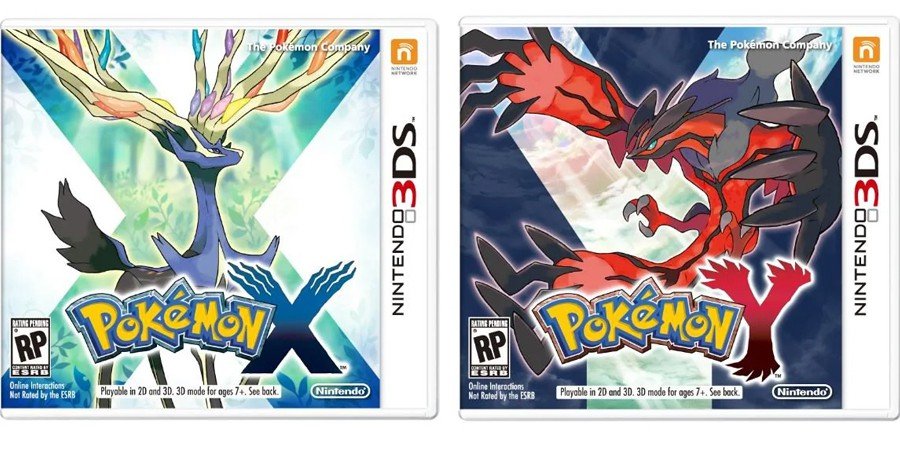
The transition from DS to 3DS was exactly as we expected: now begins the completely 3D era of Pokémon games, with fun, animated models for us to see from every angle. It was also the first generation to implement EXP. Share (division of experience gained in battles between all team members, instead of it going just for the Pokémon that entered the battlefield) as standard from the beginning, unlike previously, where it was an item obtained throughout the campaign under certain conditions.
The flowery and colorful region of Kalos, based on real-world France, has as protagonists Calem and Serena, who alongside three other children are called by Professor Sycamore to go to the city of Aquacorde to choose their initial partners between Chespin, Fennekin or Froakie and start their quest to complete the Pokédex.
Ad
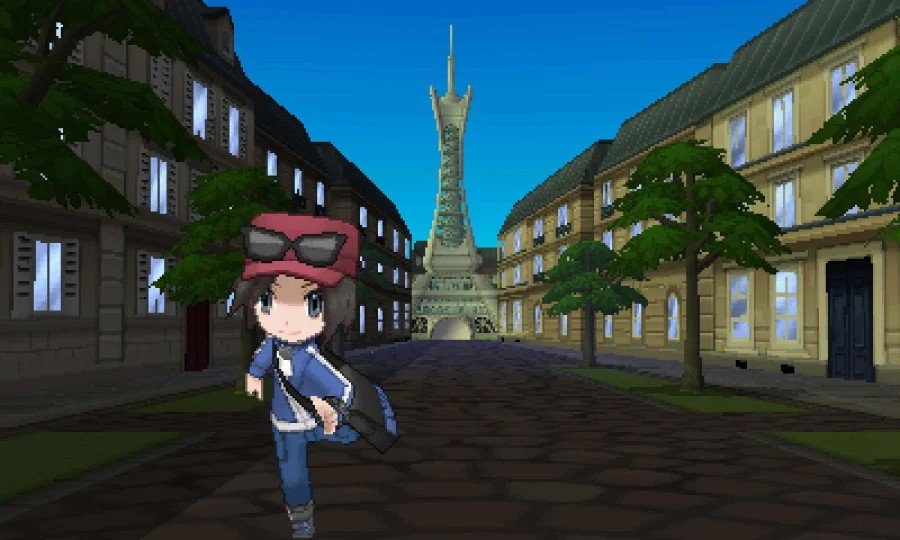
Along the journey throughout the region and its cities, collecting badges and more members for the team and for the Dex, we meet members of Team Flare - who secretly want to eradicate all Pokémon in the world - and we are introduced to the plot of AZ, involving a mysterious ancient King of Kalos and his missing Floette.
It is also in this game that, for the first time, we were introduced to Mega Evolutions, stages and forms superior to the last known evolutions of certain Pokémon which receive very strong powers through stones containing such energy. We were also introduced to one of the most used Pokémon types in the competitive meta to this day: the Fairy type.
Pokémon Omega Ruby & Alpha Sapphire
- Release year: 2014
- Console: Nintendo 3DS
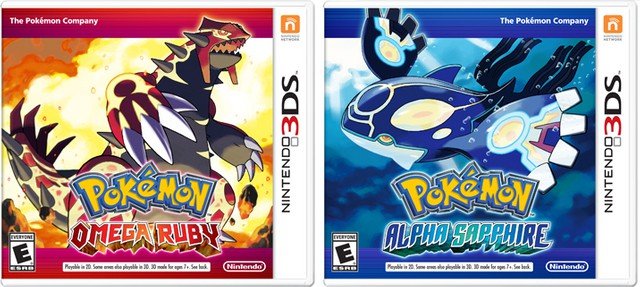
Breaking patterns, X & Y didn't have a third version or direct sequels, but followed what had worked out well in terms of Remakes. Experiencing fully 3D battles in Hoenn and exploring the third generation continent on a 3DS was enough to make these games favorites of many fans around the world. However, despite being a great game, it's basically Ruby and Sapphire all over again, with more modern graphics and the Mega Evolution mechanics added.
Generation 7: Alola
Pokémon Sun & Moon
- Release year: 2016
- Console: Nintendo 3DS

After the completion of Omega Ruby and Alpha Sapphire’s production, came the game that many fans either love with burning passion, or truly hate due to the many changes made to the classic recipe of Pokémon games used until now. In this game, located in the Alola region, based in Hawaii and bringing a pleasant, tropical climate to the franchise, we play as Elio or Selene, protagonists of this generation's games, from the moment we are called by Professor Kukui to travel to the paradisiacal archipelago and begin our adventures.
The story differs from the moment that, after having our initial partner chosen between Rowlett, Litten or Popplio, our objective is not to defeat gym leaders from different cities, but to travel to different islands and challenge their Kahunas in tasks known as “Island Trials” or “Island Tests”, thus changing the way the campaign develops for the first time since the first game. In addition to such tests, the protagonist must also defeat the Totem Pokémon on each island, on top of becoming mixed up in a plot involving the antagonists: Team Skull and, later, Team Aether and their mysterious work on the Ultra Beasts.

Ad
The differentiated format with improved graphics and unique gameplay brought a fresh and innovative air to its progress, but the lack of classic elements also generated discomfort for those who expected a little more of the same shown in previous generations that they were familiar with. In addition to this format, there were several new elements introduced - regional forms - or Alolan Forms - were presented for several Pokémon from early generations, Z-Moves - or special movements and abilities - for some Pokémon, 81 new monsters reaching a total of 802, the chance to mount on several of your Pokémon for faster travel between islands and cities, among others.
Pokémon Ultra Sun & Ultra Moon
- Release year: 2017
- Console: Nintendo 3DS

Despite the controversies in the news Sun and Moon brought with them, it was still enough of an absolute sales success that pushed Nintendo and Game Freak to complete Ultra Sun and Ultra Moon, once again bringing direct sequels to the two games released in the generation instead of one separate third title as in the initial generations.

Despite being another title and considered just a continuation, Ultra Sun and Ultra Moon, in fact, ended up being improved versions of the other two Alola games, with no major changes in terms of the number of implements added. The Ultra Beasts and several modifications in places we already knew were efficiently presented here. These powerful creatures are more impactful in the story and bring more mysteries and adventures, but without straying too much from the original game.
Pokémon Let’s Go Pikachu! & Let’s Go Eevee!
- Release year: 2018
- Console: Nintendo Switch

Still part of generation 7, but with nothing directly related to Alola, the time has come for Kanto and the first generation of Pokémon to receive another Remake and, this time, for Nintendo's best console in terms of graphics and technical capabilities. The game revived the initial region with the opportunity to move around riding your favorite Pokémon, with a completely redesigned and modernized look, several Pokémon not native to Kanto and the chance to start your campaign with the titles' mascots: Pikachu or Eevee.
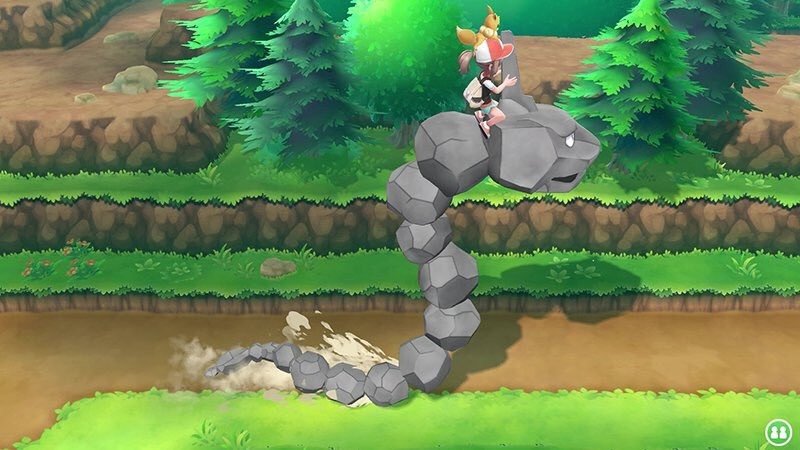
The Pokémon catching mechanic was completely modified so that players could throw their Poké Balls with the Switch controls like in Pokémon Go!, a hit released by the franchise for cell phones in 2016. Other mechanics from future generations were also added, such as Mega Evolutions, but overall, it was an attempt to put new gameplay aspects to the test for the newest console. This attempt ended up being very successful and opened the doors for subsequent games to reach the store shelves with an even better impact.
Ad
Generation 8: Galar
Pokémon Sword & Shield
- Release year: 2019
- Console: Nintendo Switch

The expectation generated by Let’s Go was great, which made Sword and Shield games highly anticipated by players. The battle and capture mechanics returned to the classics and, with the improved graphics and superior capabilities of the Switch, we finally had a game with gameplay similar to the best-known titles and a modern look.
Here we play Victor or Gloria in the adventure with their friend and rival Hop, younger brother of the current champion of Galar, Leon. After choosing between Grookey, Scorbunny or Sobble, we have to explore the continent and its cities searching for the eight badges to defeat the Elite 4 and become champions.
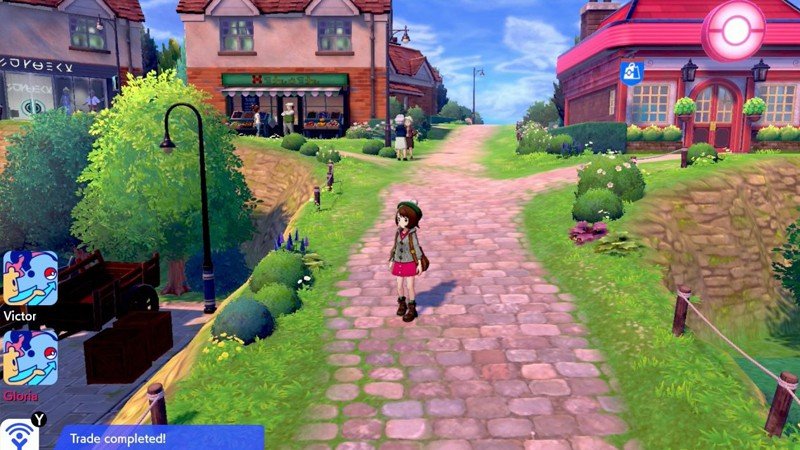
In this adventure, 81 new pocket monsters were introduced, but it still became relatively disappointing for fans, as the complete Pokédex was no longer possible - now there were only 400 Pokémon in total to collect throughout the campaign. With the release of expansions and DLCs, this number increased to 650, but it was still far from the total number of creatures, which already exceeded 800.
The most considerable difference in this generation was the introduction of Dynamax and Gigantamax, forms that some Pokémon can acquire with the help of a Dynamax Band, making them gigantic and much more powerful for a few turns during battle. Just like in Alola, Galar also brought some regional forms of old Pokémon, like Farfecth'd and Corsola.
Pokémon Brilliant Diamond & Shining Pearl
- Release year: 2021
- Console: Nintendo Switch

Once again returning to the oldest and most classic regions, BD&SP brought Sinnoh with revamped graphics and mechanics presented in Sword and Shield, with the Pokédex enhanced and giving the player a taste of the classic and the modern at the same time. The Pokédex is not yet complete, with only 493 little monsters - which is still more than in the last new title in the series so far -, but it hasn’t taken the focus away from the region's experience with its native Pokémon which were present in the original titles of the fourth generation.
Pokémon Legends: Arceus
- Release year: 2022
- Console: Nintendo Switch
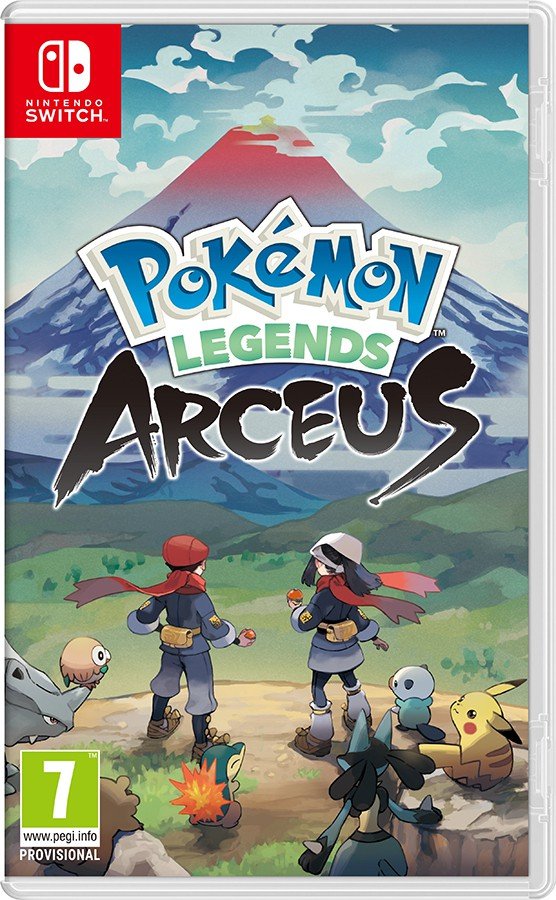
It's not the first time the franchise has experimented with time travel - but here in Legends: Arceus, the player for the first time goes through an entire campaign set in the Hisui region, the name given to the Sinnoh region hundreds of years before how we know it today. Meaning that the entire campaign delivers historical elements from the Pokémon universe, which fascinated players and fans and made this one become many players’ favorite title.
Ad
When we choose Rei or Akari, we are transported by Arceus to the past and must choose between Rowlett, Oshawott or Cyndaquil, starter Pokémon which had previously been presented in other titles in the franchise, although their latest evolutions were changed to the Hisui forms. We must deal with Team Galaxy's plans, complete the Pokédex and face several adventures to complete the mission that the God of Pokémon himself granted upon us.
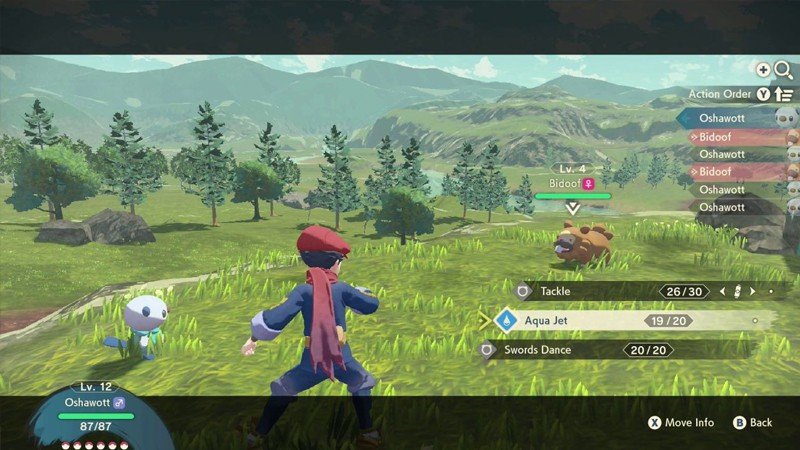
The game has an open and highly explorable world, and a rich story full of Easter eggs about the Pokémon universe and its entire construction. Some new Pokémon and forms were added, and the game had an extraordinary reception, being one of the mainline games to have a very high rating even though it doesn't follow the more classic gameplay involving gym leaders, for example.
Generation 9: Paldea
Pokémon Scarlet & Violet
- Release year: 2022
- Console: Nintendo Switch
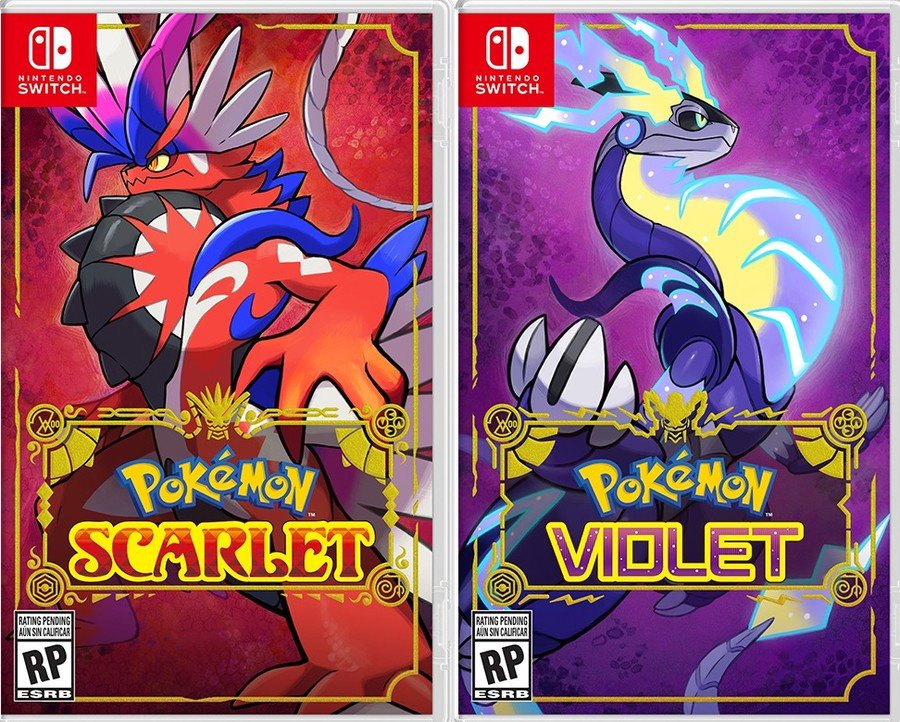
Based on Latin culture, Scarlet and Violet are the last two games released in the franchise for its main line in 2022. With it, we have the new Paldea region and a new total of 1025 collectible monsters. The game was highly anticipated by everyone, including the developers themselves, apparently.
Although the game brings several new ideas such as Terastalization, Pokémon Paradox and an entire region to explore as an open world, the number of little monsters available returned to 400 and the long-awaited Switch graphics, or at least graphics that could be similar to other acclaimed games like Lets Go and Sword and Shield, ended up being delivered as poorly finished, with inferior renderings and low texture resolution.
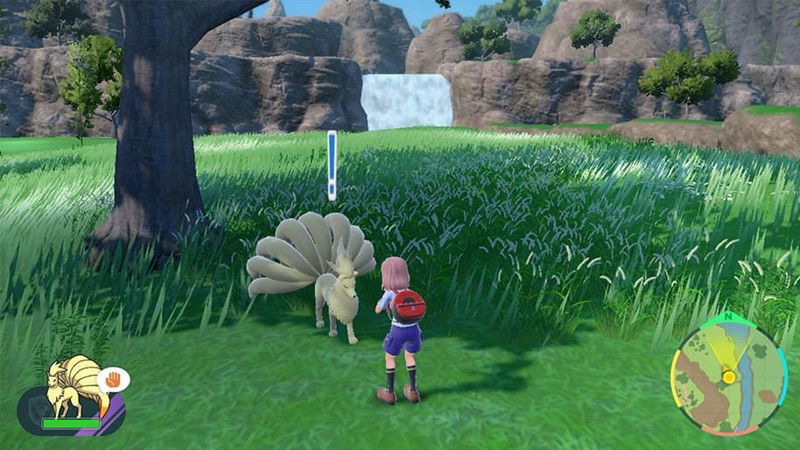
In the campaign, we play Florian or Juliana exploring Paldea and completing the Pokédex while challenging the eight gyms in an open world. In this adventure, we choose between Sprigatito, Fuecoco or Quaxly as our initial partner and, throughout the story, come face to face with the members of the villain team, Team Star, and the entire plot centering around the legendary Pokémon and the mysteries of the continent.
All the new content ended up not being enough for hardcore fans to enjoy the game 100% due to all its imperfections and lack of content. Still, it's a game with an interesting plot and is worth completing to experience as much of the Pokémon universe as possible.
What is the next journey?
After so many games, so many generations, regions, stories, seasons, characters and little monsters, Pokémon has become something huge and essential in the lives of millions of players around the world, and the entire experience brought through these games is enriching and fun. Some of the titles bring more new things, others less, but all of them are part of a single story of a fantastic world built so that we can capture and train our pocket friends.
Ad

Playing Pokémon in the order told in this article will make the player get the most out of every small corner, every piece and every secret in this universe and, even in its weakest moments, it doesn't leave anything to be desired. Traveling not just through locations, but through eras and generations is not that easy to do, but Nintendo and Game Freak know how to keep making our favorite franchise more interesting and innovative.




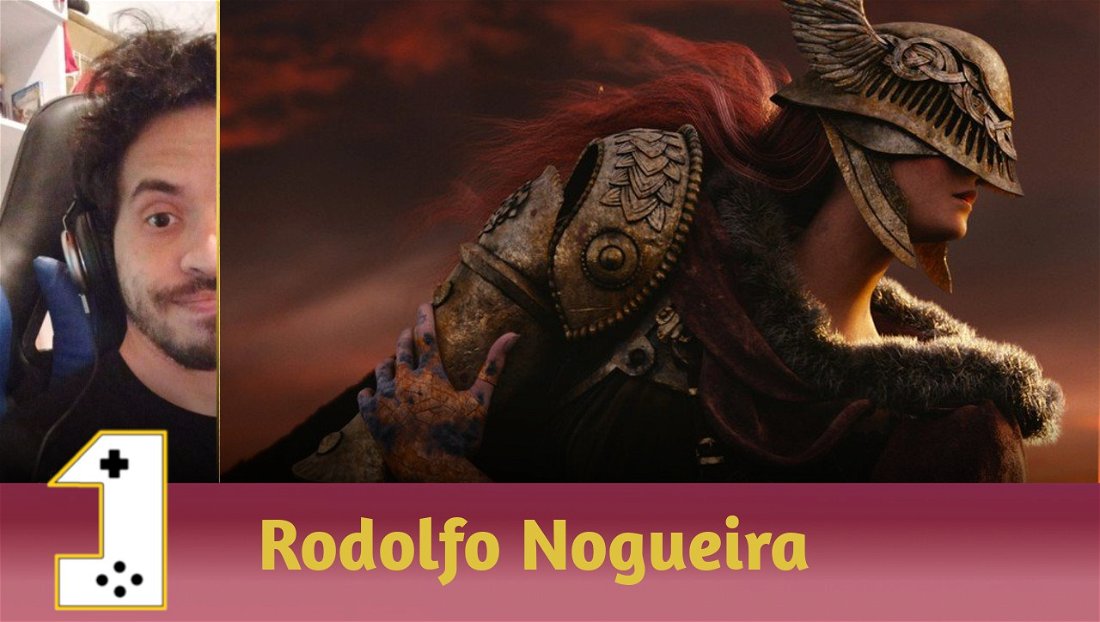
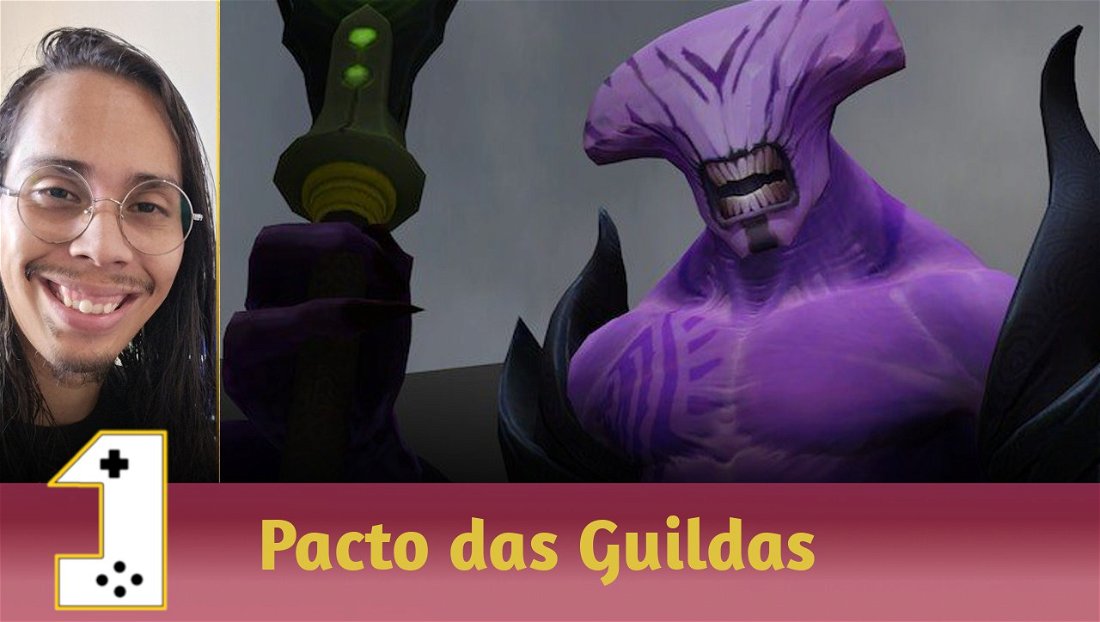


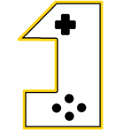

— Comentarios0
Se el primero en comentar